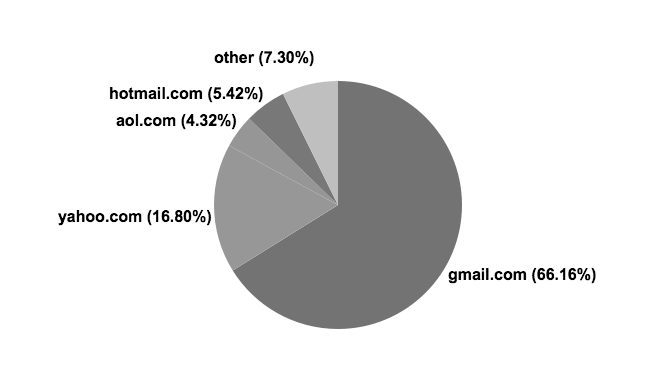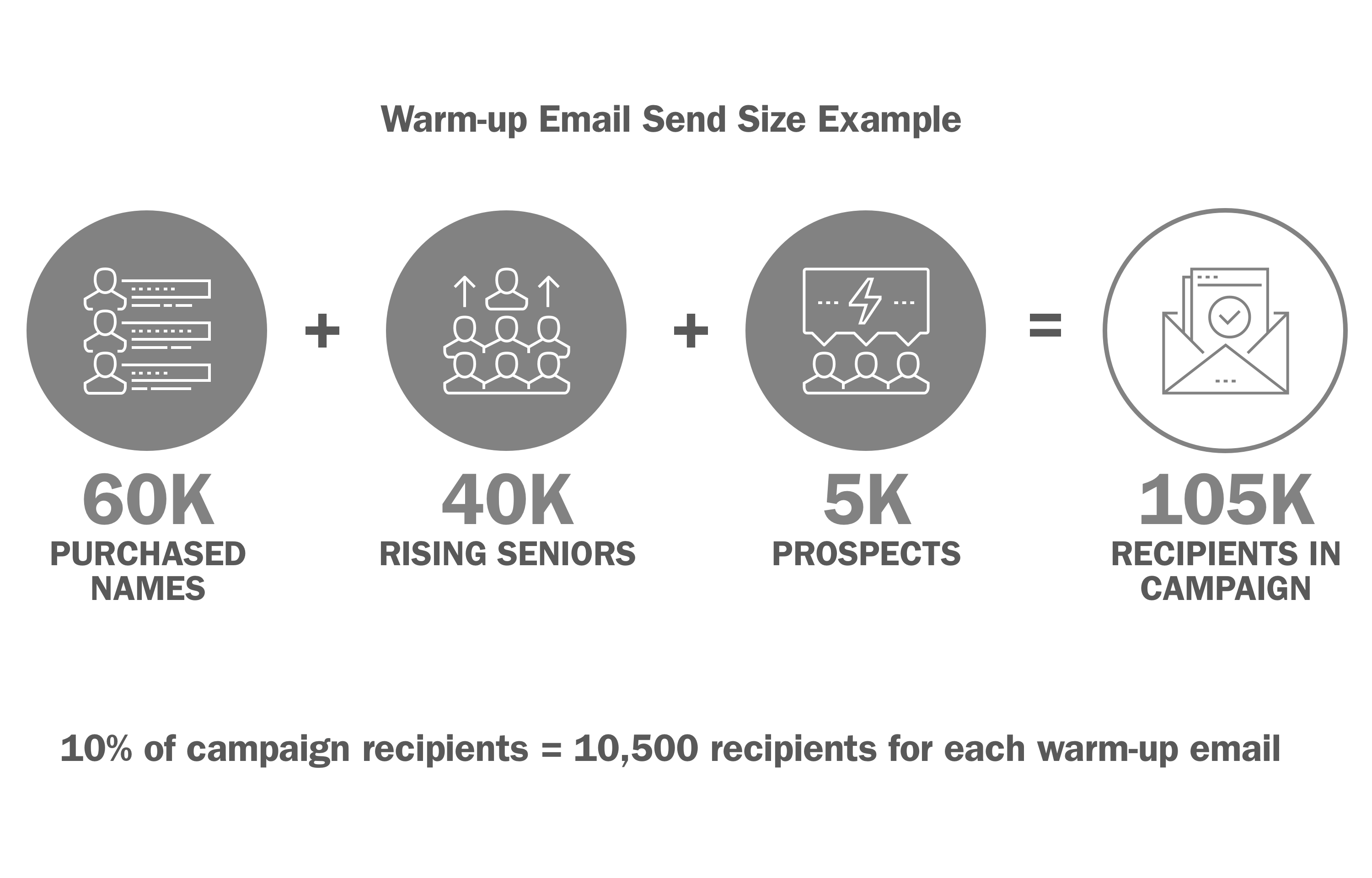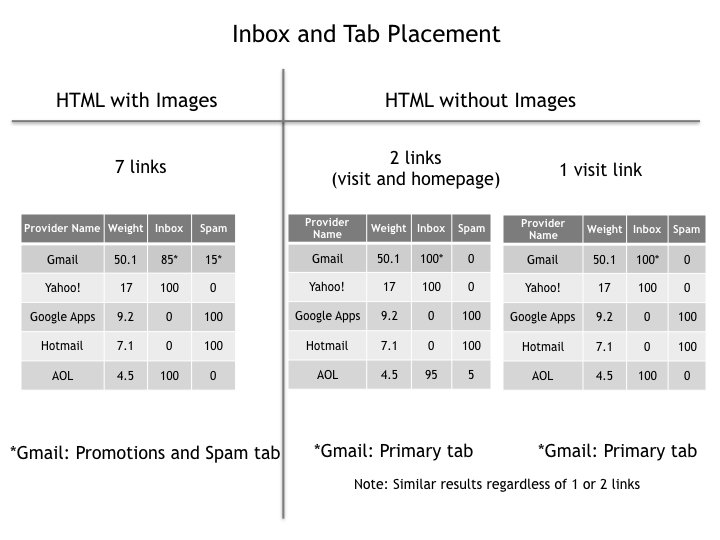How to Optimize a Student Search Email Campaign
by Erin Newton · Updated Jan 20, 2022

Email marketing attention often focuses on generating opens with strong subject lines and racking up clicks with effective design and content. Actually reaching an inbox tends to get less consideration.
To prepare for student search season, Element451 analyzed a sample of around 40 million senior search emails we developed and sent for eight of our clients from August 2016 to July 2017.
And we’re sharing key findings from our most successful campaigns with you, starting with deliverability. We’ll cover subject lines and design, too.
Follow these steps to optimize your next student search campaign. The tactics apply to a variety of search types: senior, sophomore/junior, graduate, and more.
Warm-up Your Domain
If your contact list contains mostly new suspects from a name purchase, or if your domain — what follows after the @ in an email address — is new, you’ll need to “warm up” your domain before the first search email goes out. This provides the best chance of emails staying out of spam folders.
Domains and their associated IPs have reputation scores. Scores are based on factors such as the volume of emails sent, bounce rates, and complaints (i.e. emails recipients mark as spam).
Email service providers like Gmail use these scores to help determine if an email is something the inbox owner wants to receive or if it’s likely spam. Emails flagged as spam go straight to the spam or junk folder, seldom if ever to be read by the recipient.

They also need to slowly build up the number of emails being sent rather than suddenly casting thousands-more-than-usual emails into cyberspace.
Warm-up emails are a terrific way to do this. They’re short messages sent to highly engaged contacts — those who opened an email in a previous campaign (e.g. sophomores and juniors), prospects, applicants, admits, and deposits. Topics are general; things like visiting campus or wishes for a happy Labor Day.
Plan to send one warm-up email each week, ideally four weeks before your search campaign launches. At least two warm-up emails should be plain text. (More on plain text below.)
We found that the send size should be at least 10 percent of the number of contacts in the search campaign pool. A caveat: you’ll want to monitor your deliverability success and possibly adjust the percentage accordingly.

The risks of not warming up a domain include having a large number of your messages being deemed as spam, getting blacklisted, and causing long-term damage to the domain and IP reputation.
Include a Safe Sender Link in Kickoff Email
Another step in making sure messages land in inboxes is to provide a safe sender link, or contact card, in the first message of your campaign.
There are a couple of ways to go about this.
For our clients, we create a contact card and then our data team creates a link that’s inserted at the end of the email that reads something like, “Never miss a message. Add us to your contacts.”
Clicking the link adds the sender to the recipient’s contact list or address book, depending on the email service the recipient is using.
You can also use similar language asking the recipient to add the address, without including a link.
Send Only One Email Per Week in the First Month
As you continue to build domain and IP reputation after the kickoff email, it’s important to be restrained in how many messages are sent. This is especially true if you’re sending to non-engaged populations.
Deliverability for the schools we analyzed was improved when no more than one email per week was scheduled within the first month of a campaign.
For example, this means not having both an email about visiting and a push to apply email sent in the same week. An exception is if the messages are sent to different populations. You could, for instance, send the visit email to in-state recipients and the apply message to those out-of-state.
Even after the first month, we typically only send one message per week per population for clients. On occasions when a client wants to promote an upcoming open house and stay on track with an apply email series, the open house message might be sent only to people who live within a certain mile radius of the campus.
Segment Out Non-engaged Recipients
A good way to keep improving your domain and IP reputation and deliverability is by pruning your sending list of non-engaged people.
Every few months, filter out recipients who haven’t engaged from those who have opened emails and are prospects. Continue to send to the engaged population.
Include Plain Text Emails in Your Campaign
Think about the emails that most regularly make it to your inbox — from colleagues, friends, family. They’re simple, text-only messages.
Our research indicates that messages in a similar format are more likely to be delivered to a suspect’s or prospect’s inbox, too.
We looked at a smaller sample of our larger pool of 40 million emails and conducted an A/B test to see if plain text messages fared better on their journey to an inbox. The results: inbox placement for plain text emails was 10.5 percent higher compared to HTML messages with images, buttons, etc.
How many plain text emails should you send? Consider sending a plain text kickoff email, or have a plain text email among your first three emails. Also send a plain text message every four weeks. And as mentioned earlier, at least two of the four warm-up emails should be plain text.
Why not send only plain text emails? While we know that plain text message delivery can be higher, we also know from the popularity of image-based social media and apps that images are a powerful communication tool, especially for generation Z audiences. HTML messages are also important for building brand awareness of a college or university. So we suggest a mix of both plain text and HTML emails.
Limit the Number of Links
Like plain text messages, emails with fewer links also had better deliverability statistics.
We compared an HTML email with seven links (several for social media, one to the college’s homepage, and one to its visit page) to two plain text messages. One plain text message contained two links (visit page and homepage). The other had only one link to the visit page.

The HTML message with seven links went to 85 percent of Gmail inbox promotions tabs and 100 percent of Yahoo! inboxes. Plain text messages with two links and one link arrived in 100 percent of Gmail primary tabs and Yahoo! inboxes. Because it’s open by default, messages in the primary tab are more likely to be seen.

Limiting the number of links in plain text messages is fairly easy to do. It gets trickier with HTML messages with footers and call-to-action buttons. One approach is to keep links in the body copy to a minimum and make the language a call to action. For example: start your application.
Use a Variety of Subject Line Approaches
For the subject line portion of our email study, we expanded our sample to around 55 million emails for both senior and sophomore and junior audiences.
We honed in on messages sent to the same audience (i.e. only to seniors) that had around 1 percent open rate increases between the week before and/or after.
The ones that performed well featured:
- Financial topics or words: “scholarships,” “fee waived”
- Feeling of something unique: “here’s something just for you,” “exclusive benefits”
- Sense of urgency: “apply today for a decision by May 1,” “time is running out,”
- Intriguing questions or unexpected language: “The Top Five Reasons NOT to Apply to a Great University”
- Short length: “Just the Facts”
- Emojis
There are a few important things to keep in mind about our findings. For many of the good performers, there were weeks when the same tactic didn’t improve an open rate.
Also, a sense of uniqueness or urgency like “Important Message for %%First Name%%” may boost open rates, but could lead to unsubscribes if the message doesn’t contain anything important.
So A/B test a few approaches and vary your subject line tactics week to week. You may not find the elusive perfect subject line, but you’ll develop techniques that work for your audiences.
Evaluate Your Email Technology and Strategy
During or between search campaigns is a good time to take stock of your email marketing operation — software, strategic and creative resources, process and workflow.
Are there gaps in what you want to do and what your technology is capable of?
Consider exploring an email and SMS marketing platform made expressly for higher education like Campaigns451. It’s part of our admissions CRM called Element451. Reach out to us to learn more and set up a demo.

About Element451
Boost enrollment, improve engagement, and support students with an AI workforce built for higher ed. Element451 makes personalization scalable and success repeatable.
Categories
New Blog Posts

The Definitive Guide
AI in Higher Education
Bridge the gap between the latest tech advancements and your institution's success.
Useful Links

Talk With Us
Element451 is the only AI Workforce Platform for higher education. Our friendly experts are here to help you explore how Element451 can improve outcomes for your school.
Get a Demo






